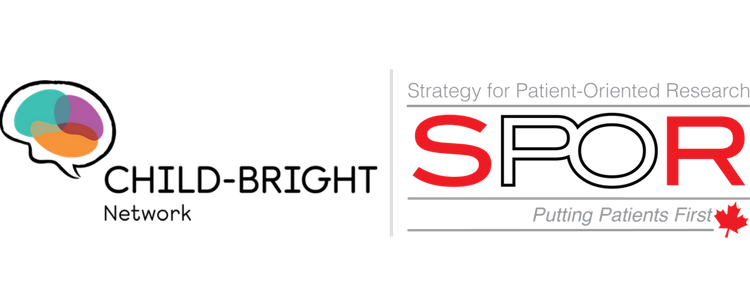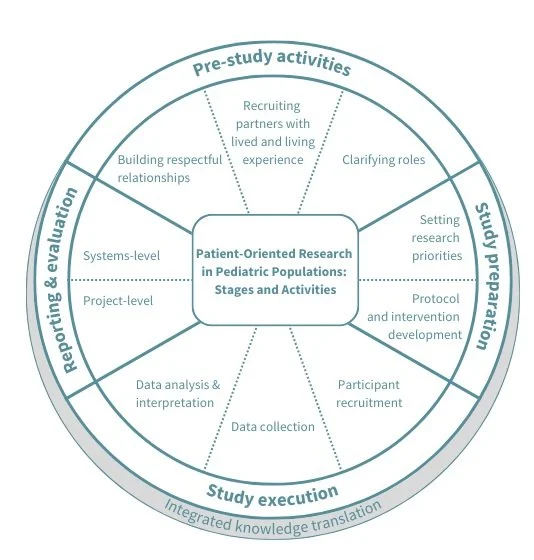In 2024, CHILD-BRIGHT members were invited to write a review article about how to conduct patient-oriented research (POR) with children and youth for a special issue of the journal, Children. The goal of the article was to provide researchers with comprehensive guidance on conducting POR, including those who may be new to conducting POR with children and youth and their families.
For the review article, our then-Research Program Manager Alan Cooper teamed up with co-authors Linda Nguyen, Lola Irelewuyi, and Steven Miller, and collaborated with parent research partners Carrie Costello, Fabiana Bachini, and Laesa Kim. Here’s what Alan had to say about the process of writing the article:
What were we trying to accomplish?
Before writing the article, we noted that there were many frameworks and high-level guidelines on how to engage partners with lived and living experience (PWLEs), such as youth or parent research partners, in pediatric research. These materials are very useful in guiding researchers on how to conduct POR. However, these resources usually don’t speak to the depth of work required to successfully conduct POR in pediatric populations—children, youth, and families.
What did we find in our literature search?
In our literature search, we found that engagement in certain research stages and activities, like research prioritization, data analysis and interpretation, are well described in the literature. Engagement in other research stages and activities, like data collection, or understanding benefits to PWLEs, are not clearly reported. We also noted that the literature about doing POR with adult research participants appears to be more advanced than the pediatric POR literature. CHILD-BRIGHT is addressing these areas for growth as our Phase 1 research projects continue to publish their findings.
Where we could not find literature on a topic, CHILD-BRIGHT PWLEs shared their experiences and described the impacts that they have on research. For example, CHILD-BRIGHT PWLE Fabiana Bacchini is also Executive Director of the Canadian Premature Babies Foundation. She described the broad reach of PWLE-led knowledge mobilization activities, like writing blog posts, producing infographics, and creating social media campaigns, to share research findings at the CPBF. These efforts led to over 76,000 views on YouTube in 2023 with an audience in 150 countries. Meanwhile, the infographics that PWLEs developed with the research team are distributed in neonatal clinics across Canada.
We also looked into the different ways POR can be evaluated and measured at a project level. CHILD-BRIGHT has led the way on both qualitative (e.g. interviews) and quantitative (e.g. surveys) evaluations of POR. CHILD-BRIGHT Parent Liaison and PWLE Carrie Costello shared that the challenges of engagement are underreported in the field, particularly if the evaluation is unstructured. Regular evaluations and check-ins between researchers and PWLEs can help identify challenges and lead to solutions.
What did we learn about doing patient-oriented research with kids, youth, and families?
What became clear to us is that authentic and meaningful POR is facilitated by researchers and PWLEs taking time to build respectful relationships and clarifying roles at the beginning of the project, and revisiting roles throughout the projects, using tools such as the Involvement Matrix. These check-ins about expectations and roles ensure that there is clear communication among the whole team, including researchers and PWLEs, throughout the project.
Overall, we hope that this review is a comprehensive resource, especially to researchers new to POR, and that it complements the other pediatric POR articles in the special issue, which includes publications from the CHILD-BRIGHT Parent-EPIQ research project.




